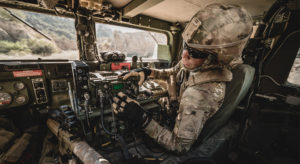
The Army announced Friday it has awarded nearly $350 million in full-rate production orders to L3Harris [LHX], Collins Aerospace [UTX] and France’s Thales for deliveries of the service’s new two-channel, software-defined radios. The full-rate production deals for the new Leader and Manpack radios arrives after the service spent two years on operational testing, with plans to field thousands of the devices as a key component to tactical network modernization efforts. “We continue to enhance our radio capabilities with the vendors…

 By
By 











